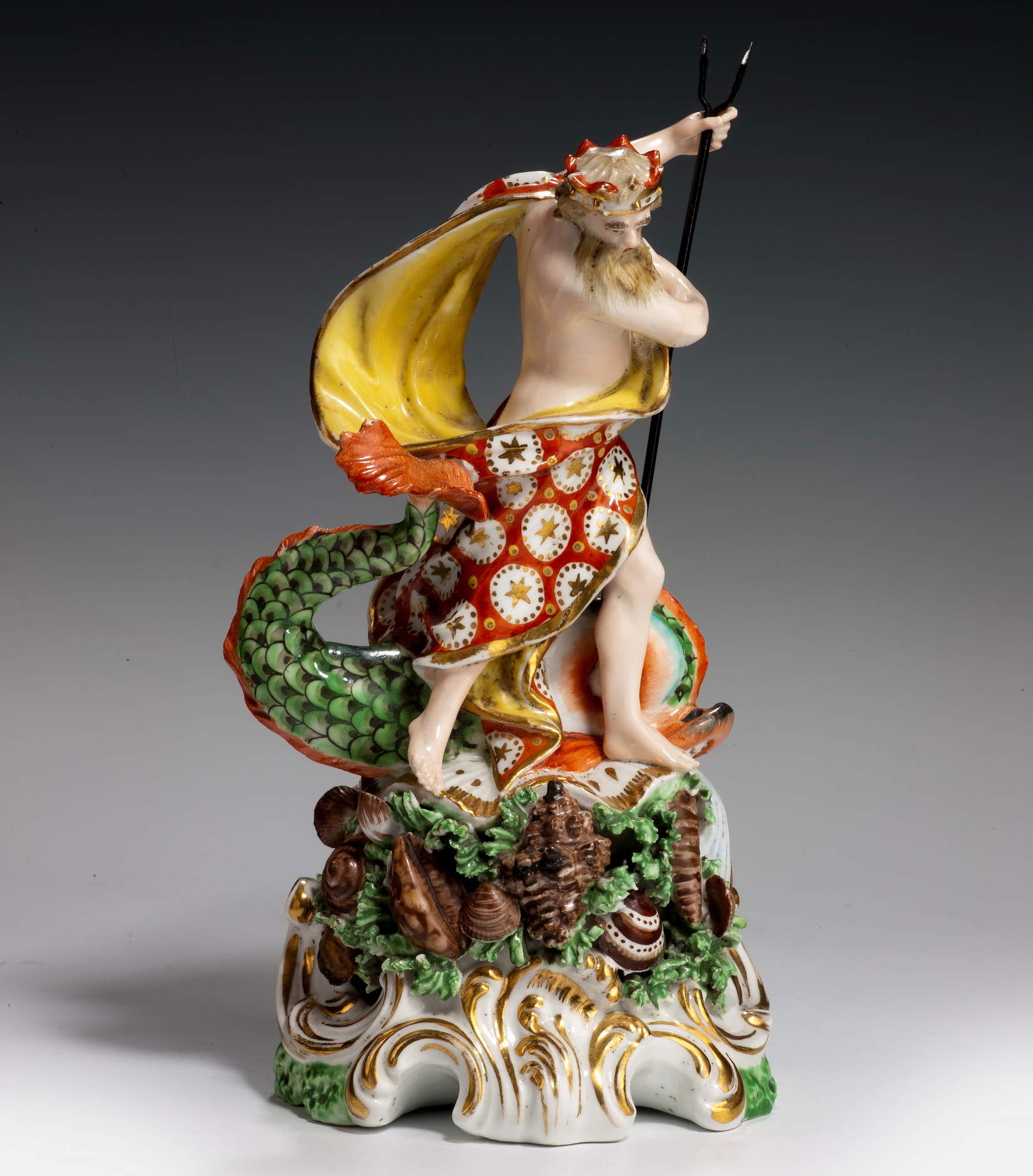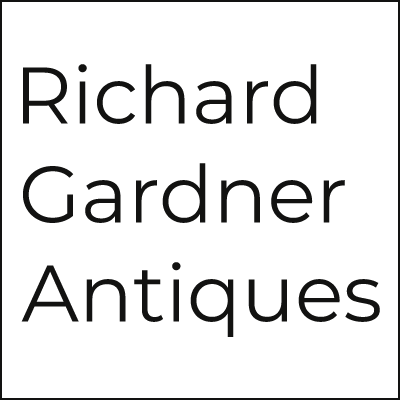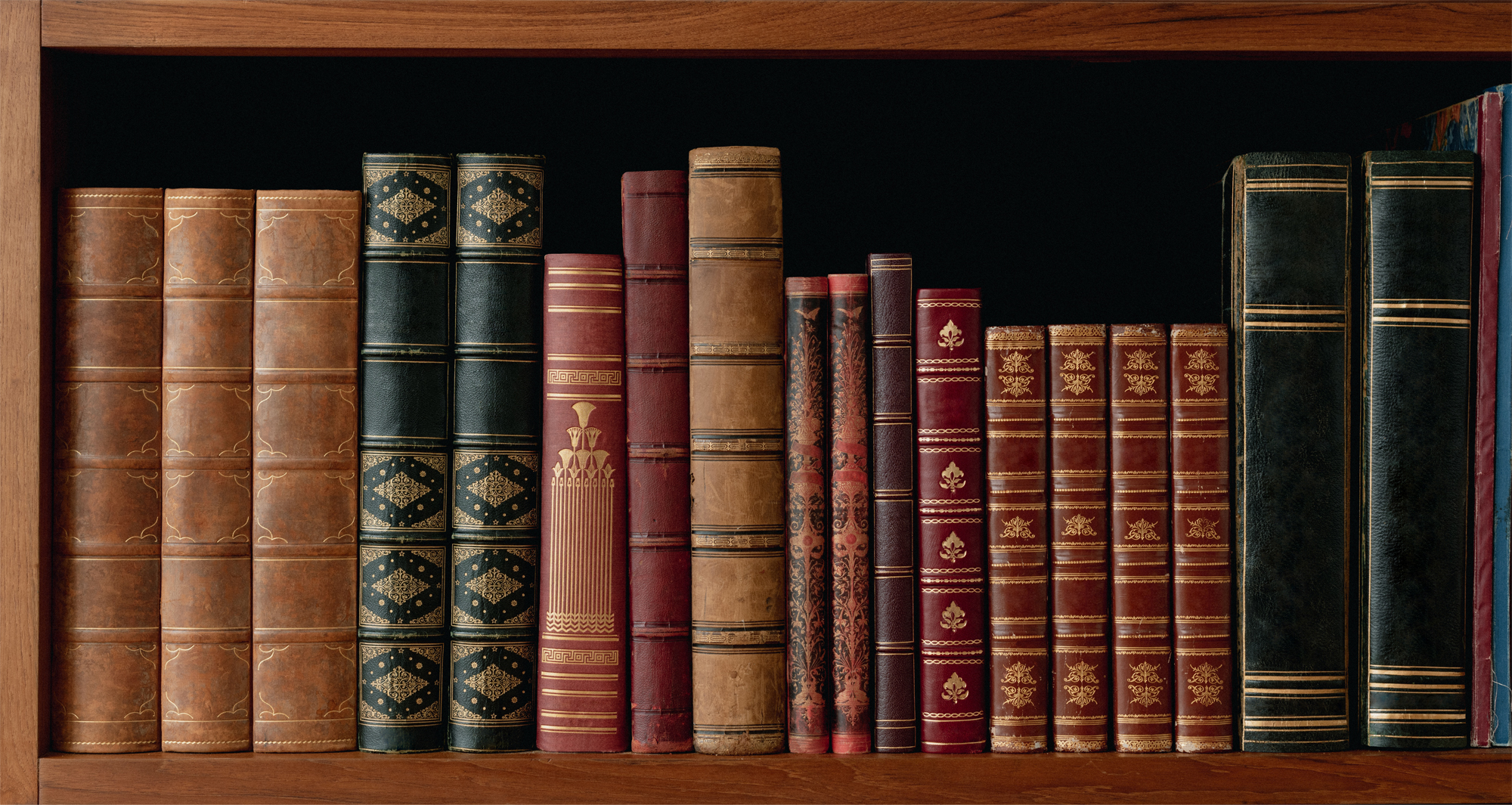Antique Derby Porcelain
 The ‘Derby’ factory was founded on Nottingham Road, near ancient St Mary’s Bridge, around 1748. A Huguenot jeweller, André Planche experimented with ingredients which he hoped would produce a similar material to that being successfully developed at Meissen in Germany. In 1756 William Dewsbury, who had previously been a porcelain decorator in London, brought his considerable business acumen to this venture. A local banker John Heath contributed the financial backing. Because of Duesbury’s pioneering skill, Derby became style leaders. Many of the early figures and patterns were taken from paintings, drawings and sculpture. As with other early porcelain factories the earliest influence was from China and later Japan. The flower spray, adapted from Japanese porcelain of the 17th Century, was used almost universally and survives today at many factories and on many differing bodies. It is the oldest Derby pattern, having been in use since the 1750’s and is known today as “Derby Posies”.
The ‘Derby’ factory was founded on Nottingham Road, near ancient St Mary’s Bridge, around 1748. A Huguenot jeweller, André Planche experimented with ingredients which he hoped would produce a similar material to that being successfully developed at Meissen in Germany. In 1756 William Dewsbury, who had previously been a porcelain decorator in London, brought his considerable business acumen to this venture. A local banker John Heath contributed the financial backing. Because of Duesbury’s pioneering skill, Derby became style leaders. Many of the early figures and patterns were taken from paintings, drawings and sculpture. As with other early porcelain factories the earliest influence was from China and later Japan. The flower spray, adapted from Japanese porcelain of the 17th Century, was used almost universally and survives today at many factories and on many differing bodies. It is the oldest Derby pattern, having been in use since the 1750’s and is known today as “Derby Posies”.
Patterns, shapes and moulds increased Derby’s range, when Chelsea and then Bow went bankrupt and were acquired by William Duesbury, along with the factories at Vauxhall and Kentish Town. Previous experimental work at both factories proved useful, their adoption helping to improve and perfect production at Derby in the 1770’s and 1780’s. Chelsea’s major contribution was its colours and glazes, whilst Bow had been experimenting with bone ash in order to give additional flexibility to the porcelain recipe.
The failure of the London factories was a symptom of the difference between England and the Continent. In Europe profit was not a consideration as porcelain was manufactured solely for the ruling houses. In England a failed kiln firing or an expensive mistake in mixing and drying clay could tip a company over the edge into bankruptcy.
“Derby’s” survival was probably due to shrewd business management. William Dewsbury carefully supervised potting, decoration and tirelessly travelled between the factory and the London showroom. His employees had to agree to keep factory secrets and he instituted work-study methods to make sure that the men were only paid at the rate agreed for the completion of satisfactory work.
Much of the early work was produced for table decoration. The body, a clay mixture suitable for firing in a kiln in the early years was not very strong and tended to crack on contact with hot liquids. Experimentation provided a sufficiently strengthened body to be able to compete with the oriental porcelain, which in spite of its long journey from China was still less expensive than its European counterpart.
Gradually, adaptations of early examples began to appear, handles on cups, strainers in spouts, condiment shelves on plates etc. The fashionable hostess was keen to serve exotic delicacies, bringing the ice pail into use to freeze and chill fruit, wine or sorbets. These were loosely based on the silver wine cooler or monteith, with a recessed lid and space beneath an inner liner for natural ice to produce the desired level of chilling.
William Duesbury died in 1786 but his son, William Duesbury II carried on until his death in 1796.
In 1775 the Royal Warrant was received from George III, the crown was incorporated thereafter in the factory mark.
Three talented modellers at Derby were Jean-Jacques Spaengler, Pierre Stephan and William Coffee. Spaengler whilst talented, was a difficult man, often in debt, often imprisoned and often causing problems for his employer. Stephan was Swiss and had trained at Wedgewood. Coffee was a fine modeller and all three produced fine figures.
William Duesbury II after the death of his father, took a partner, Michael Kean who was a very fine miniaturist and forward thinking business man but also a wild-tempered Irishman whose rages left the workforce in fear of physical attacks by him. He returned to Ireland in 1811.
At this time the management of the Derby factory devolved upon Robert Bloor, a clerk who took over the lease of the site and the day to day running of the business. Bloor was not a potter and inherited many problems, principally financial.
The Bloor period of management coincided with the new bone china body and use of newer heavier oil colours for decoration. These changes together with the adoption of mercury gilding, which replaced the honey gold of the 18th Century, resulted in very richly gilded, flamboyant designs known as ‘Japans’. These patterns were English copies in cobalt blue, iron red and gold made purely to comply with Western taste. In Japan these patterns were called ‘Imari’, as that was the only port from which porcelain left the country. The dramatic bold colourings served to conceal the minor flaws, which would previously have made finished pieces unacceptable to customers. This meant full utilisation of kiln loads.
For the last twenty years of his life Bloor was in an asylum. During this time the factory was under the control of John Haslem’s uncle, James Thomason.
From 1844 Robert Bloor’s daughter and her husband, were responsible for the business and fought to save it, but despite their efforts the factory closed in 1848.
John Haslem recorded a great deal of information that has immortalised the artists, gilders, potters and modellers, many of whose families descendants still live in the Derby area.
Locker and the managing clerk at the Nottingham Road factory, who for many years had been in charge of running the factory, along with a small group of skilled men and a boy, found a new home for the business in King Street. Locker created a new organisation with Hill, Fearn, Sharp, Henson and Samson Hancock. Like Locker the Hancock’s had been closely associated with the Duesbury’s almost from the beginning. The early name of the King Street business was ‘Locker & Co late Bloor’. By 1859 this had changed to ‘Stevenson Sharp & Co’. Stevenson was first a partner of Sharp and late of Samson Hancock.
The Company then adopted the old factory mark, a crown over a ‘D’ with crossed swords, with the addition of the letters ‘S’ and ‘H’ when the partnership of Stevenson and Hancock began in 1863.
The King Street premises continued production in craftsman style, using methods and materials varying little from those used in earlier periods. They continued to make the old figures but the enamel colours became stronger and they also used a brighter gold.
Samson Hancock was a fine painter and he continued to manage the company until 1866 when ownership went into the hands of James Robinson. He in turn was replaced by Larcome & Paget and finally until 1935 by Howard Paget alone.
Throughout the period from 1877, the King Street factory had keen competition from a larger, more modern, newly established company formed by a Liverpool glass and china stockist and a Worcester potter. Edward Phillips and William Litherland’s factory on Ormaston Road, housed the newly formed ‘Derby Crown Porcelain Company’. The buildings were completed in 1877 with all the finest equipment.
Bone china was the main area of production augmented by earthenware, parianware and eggshell china. Wonderful painting by talented artists created superb tableware and uniquely useless decorative objects of the time. The raised gold work inspired by the Indian craftsmen was incredibly beautiful. The gold was layered, each layer being fired before each fresh application. The Indian influence in design was inevitable following the manoeuvre by Disraeli to bestow on Queen Victoria the title of Empress of India.
In 1891, America introduced the McKinley Tariff, which required all the companies to mark wares with the country of origin. Manufacturers were supposed to include the word ‘England’ with their own mark. This is a useful addition for collectors, since it effectively helps to date otherwise obscure manufactured objects. It was however, never adopted by the King Street company.
The use of marks on ceramics is a minefield for collectors, although Derby marks are well documented. The early years include quite long stretches between mark changes, but the Ormaston Road company used year cyphers from 1880; impressed marks 1878 to 1900, ‘England’ from 1891 and ‘Made in England’ from 1902.
The Ormaston Road company acquired their own Royal Charter in 1890, when Queen Victoria bestowed the ‘Royal’ insignia. During the Edwardian period elaborately painted and gilded, exotically shaped and very expensive wares were produced by fine artists. Possibly the finest ceramic artist during this era was Desiré Leroy, who worked at Ormaston Road. Trained at Sévres, Leroy brought his French design flair first to the Minton factory in Stoke-on-Trent, and then to Derby. He introduced new methods, ideas and colours. His work shines out like a beacon. He was tremendously gifted in that he was totally adept at all types of decorative work, ground colour laying, painting and gilding.
An interesting production during the early part of the 20th Century was the enormous quantity of china made for the splendid ‘unsinkable Titanic’.
At Ormaston Road in 1904 a range of miniatures were introduced. These lovely little pieces were tiny copies of tableware shapes, flat irons on stands, cauldrons and coalscuttles. These are also described as salesmen’s samples or as dolls house furnishings, but were really only intended for display.
In the 1920’s more fine artists worked at Derby including Herbert Gregory, Cuthbert Gresley and Dean.
The depression, lack of work, lack of orders and the uneasy years following the 1929 Wall Street crash in America, had meant disaster for many industries. This situation finally brought about a merger between the two companies. The Ormaston Road company acquired the King Street factory in 1935.
In 1969 the company became part of the Royal Doulton group and is still producing fine porcelain to the present day.
Reference material: Derby China through three centuries by Myra Challand.
Additional material and further reading Derby Porcelain by John Twitchet.
To see a selection of current Derby stock items, please go to our English porcelain section, click here


